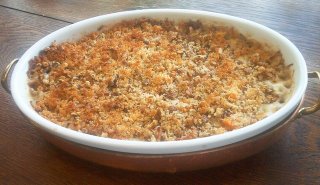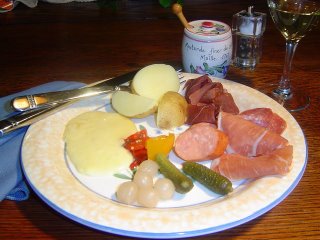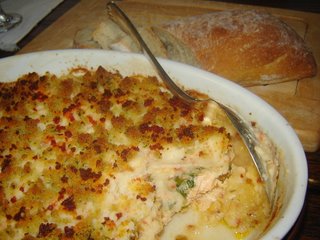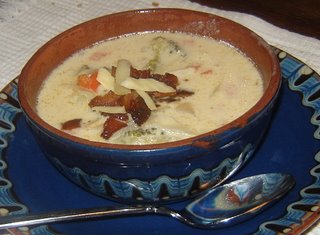Sure, I thought…she wouldn’t even be home by then. Was I surprised! Not only was she home but also had a good start on dinner. And she put me to work, too.
 Baby beets were roasting in the oven. When done and cooled a bit, I peeled them and sliced them over a bed of mâche, a slightly bitter baby green. Topped with toasted walnuts and a raspberry-balsamic vinaigrette with a touch of walnut oil, our first course was done.
Baby beets were roasting in the oven. When done and cooled a bit, I peeled them and sliced them over a bed of mâche, a slightly bitter baby green. Topped with toasted walnuts and a raspberry-balsamic vinaigrette with a touch of walnut oil, our first course was done.Duck breasts, dusted with salt and pepper, were searing in a very hot heavy skillet with a touch of olive oil. When nicely browned and crusty, Laretha transferred them to a baking pan to finish in the oven. A little port reduced in the skillet made a simple but very fine sauce.

Meanwhile, I had peeled carrots and sliced them into chicken broth seasoned with ground cardamom. Drained and mashed like potatoes, they were subtly flavored with the spice. It was a new idea for me.
A long grain-wild rice mixture was simmered with dried cranberries added.
And as if this wasn’t enough, she set me to shredding cabbage. The addition of blue cheese to the sautéed cabbage was the final touch on a very impressive dinner. And all done within about 45 minutes.
I was amazed.
You could do this, too, you know. If you’re not a fan of duck breasts, you can substitute a good cut of steak. New York strip would do nicely, I think. Whether you choose to do this whole menu or just a part of it, I know your friends will enjoy it as much as I did!
LARETHA’S STILTON CABBAGE
1/2 of a large head cabbage (you’ll use about 1 1/2 pounds)
1 tablespoon olive oil
3 ounces Stilton or other good quality blue cheese, crumbled
1/4 cup heavy cream
1/4 tsp each salt and fresh ground pepper (or to taste)
Cut the head of cabbage in half from top to stem. Turn it with one cut side down and cut into 1/4” shreds. In a heavy skillet, heat the olive oil over medium heat. Add the cabbage and sauté, stirring occasionally, until crisp-tender, about 6 minutes. Add the crumbled Stilton and stir a couple of times. Add the cream. Reduce the heat, cover and simmer for a minute or two, until cheese has melted and sauce begins to thicken. Add salt and pepper to taste. Serves 6.






